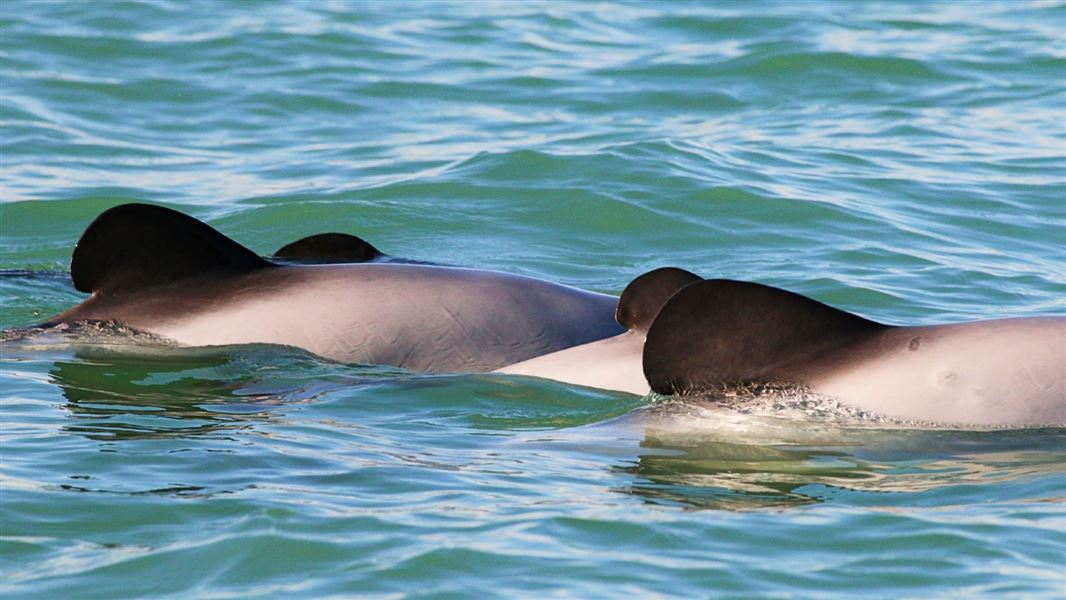Archived content: This media release was accurate on the date of publication.
Date: 11 March 2021
The Māui dolphins are among the world’s rarest, and their habitat is limited to the waters of the Tasman Sea off the west coast of the North Island. The area near shore between Auckland and Taranaki – particularly from the Manukau Harbour to Port Waikato – is where they are most frequently seen.
The Māui dolphin abundance survey work comes during Seaweek, which urges New Zealanders to enjoy responsible recreation in the marine environment, be safe and aware on and near the sea, and to respect the ocean.
Ian Angus, DOC's manager of marine species, says the current survey focusses on estimating the number of dolphins in the population of this critically endangered sub-species, and on obtaining vital information to help guide their protection.
“The last population estimate was completed in 2016, and indicated there were only 63 individual dolphins over the age of a year. This is the third abundance estimate using this method, and from this we hope to get an indication of population trend for this taonga species.”
The abundance estimate work, is done over the course of two consecutive summers. The 2021 work is the second year of this survey.
The work is undertaken in late summer and early autumn, when the dolphins are known to be in the area, allowing direct comparison between years to estimate the population size.
The survey requires taking a little plug of skin and blubber from free swimming dolphins off the coast.
“The size of the sample is just 2mm in diameter and 5mm long – and from what we’ve observed over a long period of time the dolphins are not harmed.
“The dolphins usually continue to interact with the DOC boat – behaviour which wouldn’t be expected if this caused them distress.”
The DOC staff who carry out the survey will make 10 voyages, basing themselves and their vessel out of Raglan Harbour and Manukau Harbour.
“This year’s survey has not been without its challenges. Apart from the usual issues of weather, lockdowns from covid-19 have also caused disruptions. However we are still on track to complete these important surveys as planned.”
The samples obtained as part of the abundance estimate are analysed to identify individual dolphins through their unique DNA, whether females are pregnant, the age structure of the population, and calculate the total number of dolphins.
Staff involved in the survey have already seen several calves, which is an encouraging sign.
Ian Angus says boaties and surfers can help with the understanding of the distribution of the species by reporting sightings.
“Māui and Hector’s dolphins have a unique shaped dorsal fin – somewhat like Mickey Mouse’s ear - that makes them distinguishable from all other dolphin species in New Zealand waters.”
The Hector’s Dolphin Sighting app is specially designed for the public to report sightings of both Hectors and Māui dolphins in real time. App users can upload photographs of the dolphins they see to help with identification.
If you see a dead Māui or Hector’s dolphin on the beach, urgency is crucial says Ian Angus: “We can obtain a huge amount of vital information from a dead animal, potentially including cause of death and identifying diseases the dolphin may have had.”
DOC and the Ministry for Primary Industries recently completed a review of the Threat Management Plan for Hector’s and Māui dolphins. As part of that review, additional management measures were implemented in late 2020 to further protect Māui and Hector’s dolphins.
Contact
For media enquiries contact:
Email: media@doc.govt.nz
